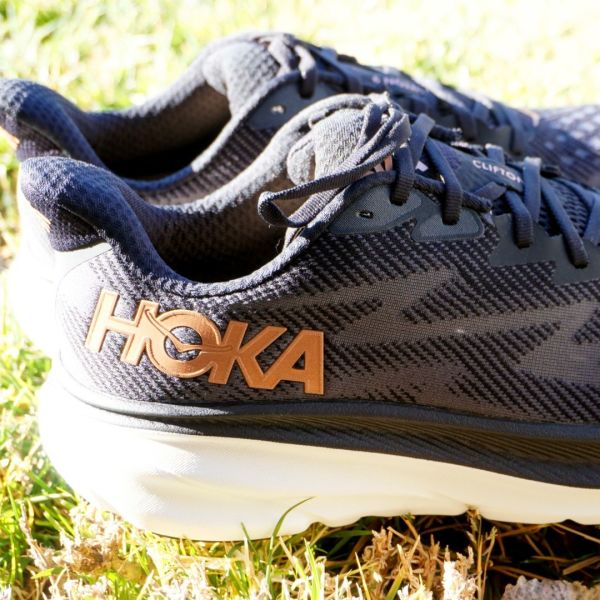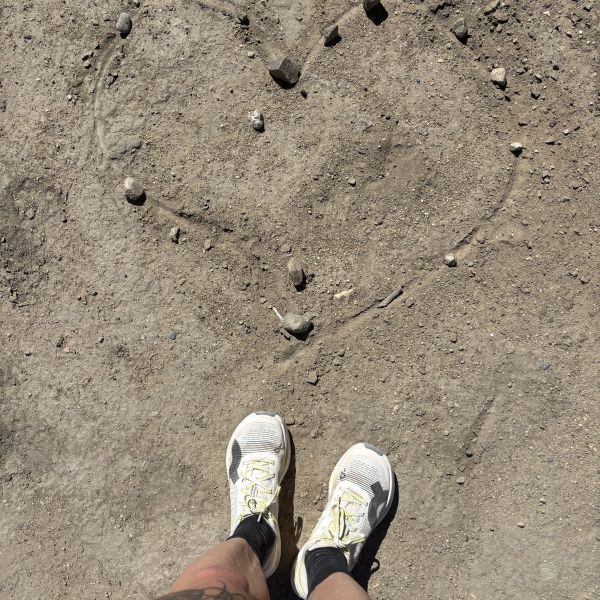
I purchased my Mafate 4s in hopes to train for and race the Silverton Alpine 50k in them. While I didn’t end up racing in them, I definitely appreciated them for the long run days in the high country, and I’ve put well over 300 miles on them since I purchased them in April of this year.
My previous experiences with HOKA trail shoes include the HOKA Torrent and one of the earlier iterations of the HOKA Speedgoat. The Mafate 4 has all of the cushioning of the Speedgoat with a touch of that Torrent responsiveness–and that is what ultimately sold me on this pricey shoe.
Since HOKA shoppers are often found waffling between the Speedgoat 5 and another trail shoe, I’ll include brief comparisons between the Mafate 4 and Speedgoat 5 in this review.
Mafate Speed 4 Specs
Stack Height: 33mm in heel, 29mm in forefoot
Heel-to-toe drop: 4mm
Weight: 10.4 oz
Speedgoat 5 Specs
Stack Height: 35mm in heel, 31mm in forefoot
Heel-to-toe drop: 4mm
Weight: 10.3 oz
Ride:
HOKA’s performance midsole foam, the dual density ProFly+, provides a combination of protection and cushioning without sacrificing the “pop” of a racing shoe. While the Speedgoat 5 offers plenty of underfoot protection, it won’t give back what you put into it like the Mafate 4.
Traction & Lockdown:
With Vibram Megagrip Litebase and 5mm lugs, the Mafate 4 is designed to be more versatile than the Speedgoat 5, which has 4mm lugs that seem to be clustered more tightly together (not ideal for mud). A neat design aspect of the Mafate 4 are the small bumps on the lugs that seem to add more surface area for the lug to grab onto the earth, but the lugs themselves aren’t too close together. I’ve used the Mafate 4 on mud, snow, sand, wet rock (West Coast), and hard-packed earth, and I’ve always felt confident in my step.
The Mafate upper also lends itself to a fantastic lockdown experience. I have a narrow foot, but haven’t needed to re-tie the laces on this shoe even during long outings. The padded tongue provides comfort and additional security. The shoe construction seems to provide a recessed fit when you slip your foot into it, making the shoe feel more like an extension of your foot rather than an accessory. The only caveat to this was when I added my Currex insoles–the additional material pushed my foot higher out of the shoe, and the lockdown/security was compromised slightly.
Shoe Shape & Stability:
Another selling point of the Mafate 4 for me was the lower stack height (of course that’s relative when 25mm+ is considered “high”). I don’t feel like I’ll turn an ankle in the Mafate, whereas the Speedgoat is notorious for being a bit unstable. HOKA also added a widened flare to the base of the Mafate 4, which contributes to this secure feeling on technical terrain. However, it’s a bit of a drawback when you’re running on a pitched or narrow trail, as the wide base feels clunky and tends to catch in odd ways.
Overall, I’m happy to have the Mafate Speed 4 in my arsenal of trail shoes, but I’m not sure it’s worth the $185 price tag since it’s plateless (no, not even a rockplate). However, if you’re a HOKA loyalist who isn’t sure if the Speedgoat is the right choice for you, consider slipping into the Mafate Speed 4!
Login to your account to leave a comment.






We Want to Give it to You!
